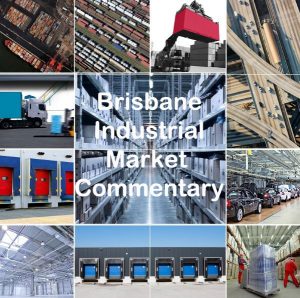 The demand for investment quality industrial stock across the price range remains high, owner-occupier activity continues to be strong and tenants are favouring newer style premises using the highly competitive leasing market to their advantage. Pre-commitments comprise a significant proportion of the larger demand requirements.
The demand for investment quality industrial stock across the price range remains high, owner-occupier activity continues to be strong and tenants are favouring newer style premises using the highly competitive leasing market to their advantage. Pre-commitments comprise a significant proportion of the larger demand requirements.
Although leasing demand has increased, vacancies have outpaced the take up rate. Generally the market is positive with a downward influence on rentals as equilibrium is sought. The majority of vacancies are of older stock and this rate is increasing.
As one would expect, yields for premium grade investments have tightened to below 6% and 6.5%, while lesser grade investment yields range from 8.5% upwards. Prime rentals range between $90/m² and $155/m² while lower grade stock rental range from $85 downwards to not leasable. Effective rentals may be less due to substantial incentives being offered to prospective tenants.
There is a shortage of infill smaller vacant industrial land sites and larger sites are available on the
Gold Coast /Logan Motorway Corridor and further west around Ipswich. Vacant land packages between 2,000m² and 5,000m² are selling in the wide range between $175/m² and $450/m². A modest increase in prices is expected.
The industrial market drivers include the following: a growing economy; a growing population; key infrastructure investment; availability of finance and sound governance. The Australian economy is sound but has issues which need addressing, e.g. an agreed energy policy. Although the demographics show Brisbane’s population is growing, the job outlook, as recently reported, shows a negative trend. While big infrastructure projects are in the pipeline, little of significance has commenced or will start soon. Fortunately the financial market remains sound and money is still available; however strong government at the federal and state levels is lacking.
The shape of the Brisbane and SEQ industrial market continues to transition following the mining boom. We have seen the decline of manufacturing businesses and to some extent warehousing. Our main industrial users are in transport and logistics. The expanded construction industry, due to the apartment and housing mini boom, has created some demand, but this has been limited.
Owners struggling to lease buildings need to assess whether their buildings are relevant and, if not, what is needed to make them leasable; how do the buildings compare with others which have been leased; how do the buildings compare with competing stock of vacant buildings; are there redevelopment/refurbishment strategies/options that will maximise appeal and create value on the investments? One option is to sell and allow others to create the opportunities.
Over the next year we expect the competitive rental market to continue and tight yields to remain, even if the price of funding increases. It remains a good market for tenants to lease, vendors to sell, owner occupiers to act and investors to invest.
